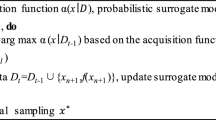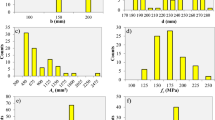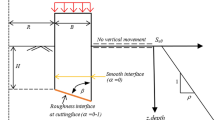Abstract
Manual calculation of the compressive strength of concrete (CSC) is an expensive and time-consuming process. Soft computing methods outperform the statistical methods used to resolve these problems. Nonetheless, complicated prediction models are still incomplete and require more exploration. Artificial neural networks (ANNs) provide a better and faster technique featuring solitary hidden layers and have improved the generalization capacity. The present paper presents three ANN-based (shuffled complex evolution, evaporation rate based water cycle algorithm (ERWCA), and Cuckoo optimization algorithm) prediction models to anticipate the compressive strength of concrete efficiently. An available database from the UCI repository is employed to develop and access the model performance. A comparison is made between the prediction accuracies of the above three techniques. Using all models, a comparative investigation has been conducted to predict the compressive strength of concrete at the curing ages of 91, 56, and 28 days. The experimental findings obtained from the ERWCA-MLP method indicate its capability of robust CSC prediction. On average, this method achieves the minimum RMSE of 0.55314 and 0.43329 and R2 of 0.99803 and 0.99824. The statistical significance test and the comparative analysis of simulation results indicate the superiority of ERWCA-MLP in predicting the compressive strength of concrete.












Similar content being viewed by others
Data availability
Data are available as per request.
References
Chen S, Zhang H, Zykova KI, Gholizadeh Touchaei H, Yuan C, Moayedi H, Le BN (2023) Computational intelligence models for predicting the frictional resistance of driven pile foundations in cold regions. Comput Concr 32(2):217–232. https://doi.org/10.12989/cac.2023.32.2.217
Zhang J, Zhang C (2023) Using viscoelastic materials to mitigate earthquake-induced pounding between adjacent frames with unequal height considering soil-structure interactions. Soil Dyn Earthq Eng 172:107988. https://doi.org/10.1016/j.soildyn.2023.107988
Huang H et al (2022) Theoretical analysis on the lateral drift of precast concrete frame with replaceable artificial controllable plastic hinges. J Build Eng 62:105386
Geng X et al (2021) Predicting the concrete compressive strength through MLP network hybridized with three evolutionary algorithms. Smart Struct Syst 28(5):711
Zhou S et al (2021) Preparation and characterization of high-strength geopolymer based on BH-1 lunar soil simulant with low alkali content. Engineering 7(11):1631–1645
Alkroosh IS, Sarker PK (2019) Prediction of the compressive strength of fly ash geopolymer concrete using gene expression programming. Comput Concr Int J 24(4):295–302
Almeida Neto MA, Fagundes RAA, Bastos-Filho CJ (2018) Optimizing support vector regression with swarm intelligence for estimating the concrete compression strength. In: International conference on machine learning and data mining in pattern recognition, Springer.
Zhao Y, Gor M, Voronkova DK, Gholizadeh Touchaei H, Moayedi H, Le BN (2023) An optimized ANFIS model for predicting pile pullout resistance. Steel Compos Struct 48(2):179–190. https://doi.org/10.12989/scs.2023.48.2.179
Tang Y, Wang Y, Wu D, Chen M, Pang L, Sun J, Wang X (2023) Exploring temperature-resilient recycled aggregate concrete with waste rubber: An experimental and multi-objective optimization analysis. Rev Adv Mater Sci 62(1):20230347. https://doi.org/10.1515/rams-2023-0347
Ashrafian A et al (2020) An evolutionary approach to formulate the compressive strength of roller compacted concrete pavement. Measurement 152:107309
Taleshi AA, Hashemi H (2021) Estimation of seismic attenuation in the Kangan formation from walkaway VSP data. J Seismic Explor 30(3):201–210
Moayedi H et al (2022) Optimized ANNs for predicting compressive strength of high-performance concrete. Steel Compos Struct 44:867–882
Asteris PG, Mokos VG (2020) Concrete compressive strength using artificial neural networks. Neural Comput Appl 32(15):11807–11826
Asteris P et al (2016) Prediction of self-compacting concrete strength using artificial neural networks. Eur J Environ Civ Eng 20(sup1):s102–s122
Asteris PG, Roussis PC, Douvika MG (2017) Feed-forward neural network prediction of the mechanical properties of sandcrete materials. Sensors 17(6):1344
Asteris PG et al (2019) Stochastic vulnerability assessment of masonry structures: concepts, modeling and restoration aspects. Appl Sci 9(2):243
Bungey JH, Grantham MG (2006) Testing of concrete in structures. Crc Press
Nayak SC (2017) Development and performance evaluation of adaptive hybrid higher order neural networks for exchange rate prediction. Int J Intell Syst Appl 9(8):71
Nayak SC, Misra BB, Behera HS (2016) Fluctuation prediction of stock market index by adaptive evolutionary higher order neural networks. Int J Swarm Intell 2(2–4):229–253
Nayak SC, Misra BB, Behera HS (2017) Adaptive hybrid higher order neural networks for prediction of stock market behavior. Nature-inspired computing: concepts, methodologies, tools, and applications. IGI Global, pp 553–570
Behera AK et al (2019) Improving software reliability prediction accuracy using CRO-based FLANN. Innovations in computer science and engineering. Springer, pp 213–220
Sharifi Y, Hosseinpour M (2020) A predictive model based ANN for compressive strength assessment of the mortars containing metakaolin. J Soft Comput Civ Eng 4(2):1–12
Priyadarshee A et al (2020) Neural Models for Unconfined Compressive Strength of Kaolin clay mixed with pond ash, rice husk ash and cement. J Soft Comput Civ Eng 4(2):85–102
Fernández-Navarro F et al (2012) Evolutionary generalized radial basis function neural networks for improving prediction accuracy in gene classification using feature selection. Appl Soft Comput 12(6):1787–1800
Huang G-B, Zhu Q-Y, Siew C-K (2006) Extreme learning machine: theory and applications. Neurocomputing 70(1–3):489–501
Huang GB et al (2011) Extreme learning machine for regression and multiclass classification. IEEE Trans Syst Man Cybern Part B Cybern 42(2):513–529
Li J, Chen M, Li Z (2022) Improved soil–structure interaction model considering time-lag effect. Comput Geotech 148:104835
Shi M, Lv L, Xu L (2023) A multi-fidelity surrogate model based on extreme support vector regression: fusing different fidelity data for engineering design. Eng Comput 40(2):473–493. https://doi.org/10.1108/EC-10-2021-0583
Sun Z-L et al (2008) Sales forecasting using extreme learning machine with applications in fashion retailing. Decis Support Syst 46(1):411–419
Nayak SC, Misra BB (2020) Extreme learning with chemical reaction optimization for stock volatility prediction. Financ Innov 6(1):1–23
Grigorievskiy A et al (2014) Long-term time series prediction using OP-ELM. Neural Netw 51:50–56
Adnan RM et al (2023) Application of novel binary optimized machine learning models for monthly streamflow prediction. Appl Water Sci 13(5):110
Xiao C, Zheng K, Chen S, Li N, Shang X, Wang F, Chen Z (2023) Additive manufacturing of high solid content lunar regolith simulant paste based on vat photopolymerization and the effect of water addition on paste retention properties. Addit Manuf 71:103607. https://doi.org/10.1016/j.addma.2023.103607
Moodi Y et al (2018) Using response surface methodology and providing a modified model using whale algorithm for estimating the compressive strength of columns confined with FRP sheets. Constr Build Mater 183:163–170
Pham TM, Hadi MN (2014) Stress prediction model for FRP confined rectangular concrete columns with rounded corners. J Compos Constr 18(1):04013019
Moodi Y, Mousavi SR, Sohrabi MR (2019) New models for estimating compressive strength of concrete confined with FRP sheets in circular sections. J Reinf Plast Compos 38(21–22):1014–1028
Pandey S, Kumar V, Kumar P (2021) Application and analysis of machine learning algorithms for design of concrete mix with plasticizer and without plasticizer. J Soft Comput Civ Eng 5(1):19–37
Moayedi H et al (2022) Applicability and comparison of four nature-inspired hybrid techniques in predicting driven piles’ friction capacity. Transp Geotech 37:100875
Xu L et al (2022) An upscaling approach to predict mine water inflow from roof sandstone aquifers. J Hydrol 612:128314
Moayedi H, Mosallanezhad M, Nazir R (2017) Evaluation of maintained load test (MLT) and pile driving analyzer (PDA) in measuring bearing capacity of driven reinforced concrete piles. Soil Mech Found Eng 54(3):150–154
Tien Bui D et al (2021) Fine-tuning of neural computing using whale optimization algorithm for predicting compressive strength of concrete. Eng Comput 37(1):701–712
Wu D et al (2022) ANN-Incorporated satin bowerbird optimizer for predicting uniaxial compressive strength of concrete. Steel Compos Struct 45:281–291
Zhao Y et al (2020) Employing TLBO and SCE for optimal prediction of the compressive strength of concrete. Smart Struct Syst 26(6):753–763
Dua D, Graff C (2017) UCI machine learning repository
Shen Y, Ahmadi Dehrashid A, Bahar RA, Moayedi H, Nasrollahizadeh B (2023) A novel evolutionary combination of artificial intelligence algorithm and machine learning for landslide susceptibility mapping in the west of Iran. Environ Sci Pollut Res 1–29. https://doi.org/10.1007/s11356-023-30762-8
Yuan C, Moayedi H (2020) Evaluation and comparison of the advanced metaheuristic and conventional machine learning methods for the prediction of landslide occurrence. Eng Comput 36:1801–1811. https://doi.org/10.1007/s00366-019-00798-x
Ikram RMA et al (2023) Streamflow prediction in mountainous region using new machine learning and data preprocessing methods: a case study. Neural Comput Appl 35(12):9053–9070
Huang H et al (2021) Seismic behavior of a replaceable artificial controllable plastic hinge for precast concrete beam-column joint. Eng Struct 245:112848
Wang M, Yang X, Wang W (2022) Establishing a 3D aggregates database from X-ray CT scans of bulk concrete. Constr Build Mater 315:125740
Zhai SY et al (2023) Seismic behavior of an innovative bolted connection with dual-slot hole for modular steel buildings. Eng Struct 279:115619
Huang H et al (2022) Seismic behavior of a friction-type artificial plastic hinge for the precast beam–column connection. Arch Civ Mech Eng 22(4):201
Huang H et al (2021) Progressive collapse resistance of multistory RC frame strengthened with HPFL-BSP. J Build Eng 43:103123
Adnan RM et al (2023) Improving drought modeling based on new heuristic machine learning methods. Ain Shams Eng J 14(10):102168
Abedini M, Zhang C (2022) Residual capacity assessment of post-damaged RC columns exposed to high strain rate loading. Steel Compos Struct 45(3):389–408
Sun Y, Dai HL, Moayedi H, Le BN, Adnan RM (2024) Predicting steady-state biogas production from waste using advanced machine learning-metaheuristic approaches. Fuel 355:129493. https://doi.org/10.1016/j.fuel.2023.129493
Sadollah A et al (2015) Water cycle algorithm with evaporation rate for solving constrained and unconstrained optimization problems. Appl Soft Comput 30:58–71
Eskandar H et al (2012) Water cycle algorithm–a novel metaheuristic optimization method for solving constrained engineering optimization problems. Comput Struct 110:151–166
Adnan RM et al (2023) Pan evaporation estimation by relevance vector machine tuned with new metaheuristic algorithms using limited climatic data. Eng Appl Comput Fluid Mech 17(1):2192258
Sun Y, Dai HL, Xu L, Asaditaleshi A, Ahmadi Dehrashid A, Adnan Ikram RM, Moayedi H, Ahmadi Dehrashid H, Thi QT (2023) Development of the artificial neural network’s swarm-based approaches predicting East Azerbaijan landslide susceptibility mapping. Environ Dev Sustain 1–38. https://doi.org/10.1007/s10668-023-04117-9
Yang XS, Deb S (2010) Engineering optimisation by cuckoo search. Preprint arXiv:1005.2908
Rajabioun R (2011) Cuckoo optimization algorithm. Appl Soft Comput 11(8):5508–5518
Author information
Authors and Affiliations
Corresponding author
Ethics declarations
Conflict of interest
All the authors declare that they have no conflict of interest.
Additional information
Publisher's Note
Springer Nature remains neutral with regard to jurisdictional claims in published maps and institutional affiliations.
Rights and permissions
Springer Nature or its licensor (e.g. a society or other partner) holds exclusive rights to this article under a publishing agreement with the author(s) or other rightsholder(s); author self-archiving of the accepted manuscript version of this article is solely governed by the terms of such publishing agreement and applicable law.
About this article
Cite this article
Moayedi, H., Foong, L.K. & Le, B.N. Three intelligent computational models to predict the high-performance concrete mixture. Neural Comput & Applic 36, 3479–3498 (2024). https://doi.org/10.1007/s00521-023-09233-1
Received:
Accepted:
Published:
Issue Date:
DOI: https://doi.org/10.1007/s00521-023-09233-1




